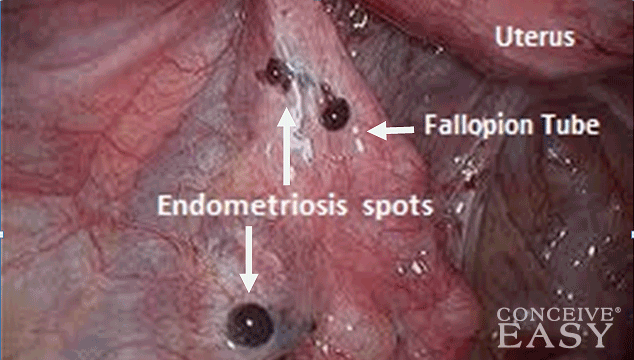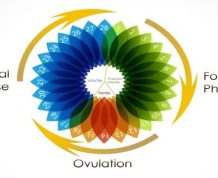![]() The information provided by our expert should not constitute a diagnosis of your condition. Always consult a medical practitioner or healthcare provider for a formal diagnosis. By making use of this content, you agree that ConceiveEasy and the expert assume no liability.
The information provided by our expert should not constitute a diagnosis of your condition. Always consult a medical practitioner or healthcare provider for a formal diagnosis. By making use of this content, you agree that ConceiveEasy and the expert assume no liability.

Endometriosis is a very common female fertility problem. Experts estimate that endometriosis probably affects 25-35% of women who have fertility problems in America, and probably millions more worldwide. No one is really sure what causes endometriosis. Claim Your 20 Free Pregnancy Tests – Click Here
It occurs when uterine tissue grows outside of the uterus, such as in the ovaries, fallopian tubes, intestines, rectum, or bladder. When the uterine tissue grows outside of the uterus, it doesn’t expel with the monthly period like it is supposed to. Instead, it gets implanted there and can cause lesions, scar tissue, cysts and sometimes unbearable pain that accompanies the menstrual cycle.

As mentioned before, experts are not entirely sure what causes this condition. Even though it is a very common condition, doctors and researchers have not been able to pinpoint one particular cause. A common theory is that during menstruation, endometrial tissue “backs up” through the fallopian tubes and then settles and grows in the abdomen.
Others believe that all women experience menstrual tissue backup but in most cases the immune system destroys the abnormal tissue before it attaches in the abdomen. When the immune system is unable to get rid of the misplaced tissue, endometriosis develops. Another theory is that remnants of a woman’s own embryonic tissue that formed while she was in her mother’s womb may develop into endometriosis during adulthood or may transform into tissue of the uterine lining under certain circumstances.

Some women might not have any symptoms of endometriosis at all. They might not even know that they have endometriosis at all. However, some women experience very painful menstrual cramps, painful or frequent urination during their periods, painful bowel movements during menstruation, pelvic, side or abdominal pain during menstruation, or other symptoms. Doctors can diagnose endometriosis with an ultrasound, a pelvic exam or a laparoscopy.

If you have minimal or mild endometriosis, you’ll have a 30 to 60 percent chance of getting pregnant within two years of completing therapy. If you have a moderate case, you’ll have a 60 percent chance, and if you have a severe case, you’ll have a 35 percent chance.
Doctors can, in some cases, do a laparoscopy to try to remove some of the growths and tissue to help boost your chances of conceiving. Sometimes, fertility drugs or assisted reproductive techniques like artificial insemination or in vitro fertilization can help women get pregnant with endometriosis.
Endometriosis used to mean that there wasn’t much hope for getting pregnant, but that has changed in recent years. There are many different treatment options out there for women who have endometriosis now, and many times, women can overcome this disorder in order to get pregnant.










Comments